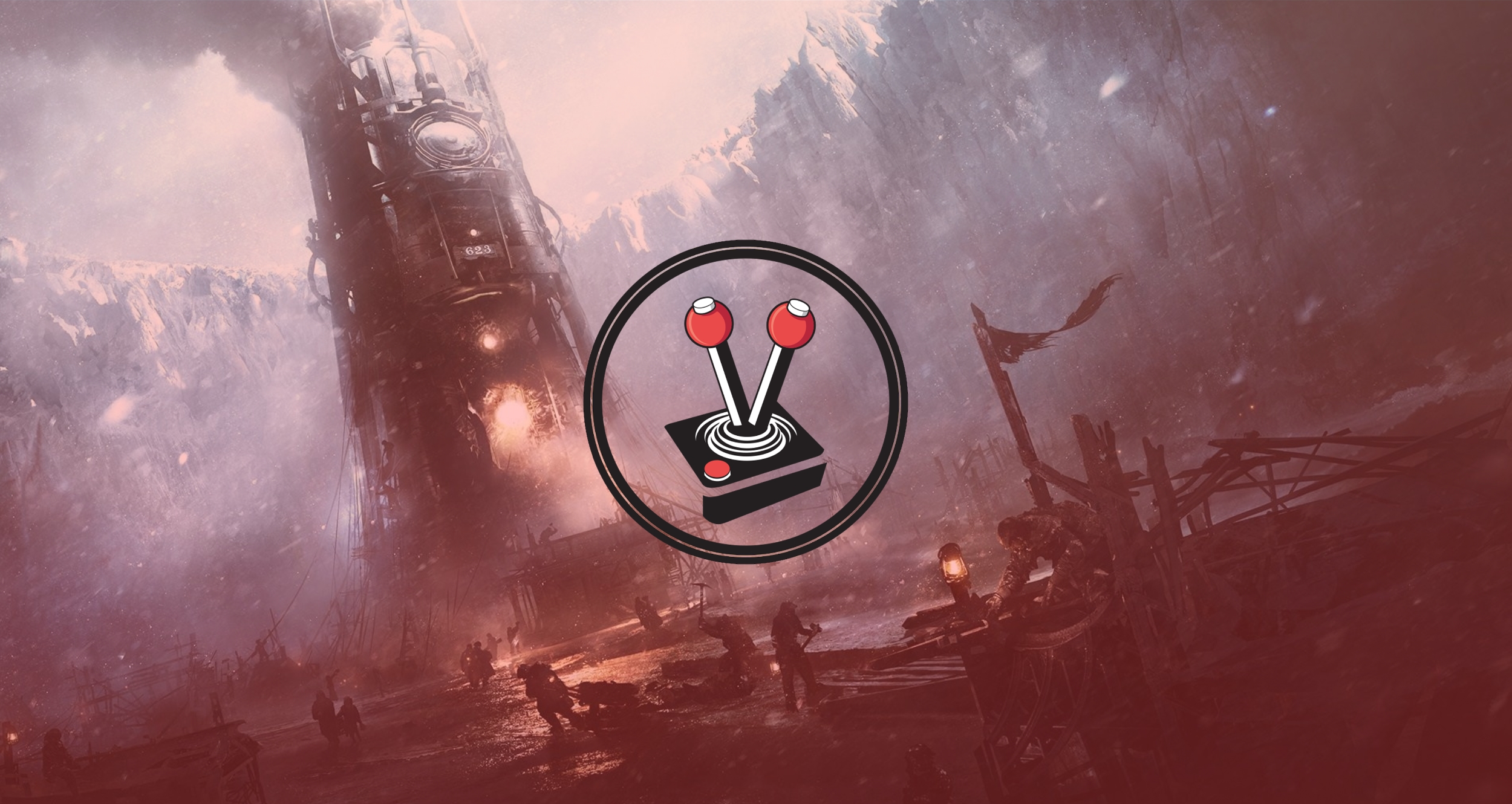City builders are a dime a dozen. Despite the saturation of the genre, there are still many great franchises available for gamers to enjoy. These include the likes of Cities: Skylines and Anno. However, it is rare for a city builder to introduce a unique new spin on the genre. Yet this is exactly what Frostpunk has done. The game merges incredible city building mechanics with survival elements, and a harrowing narrative with intriguing strategy and city management.
Frostpunk first released in 2018 to huge critical acclaim. I have enjoyed every second of it on PC, and have been longing for a console edition. Developer 11-bit Studios has delivered with the new Frostpunk: Console Edition version of the title, which is remarkable in its own right. In this Vamers Frostpunk review, I go over exactly what makes Frostpunk remarkable and why the console edition is just as good, if not better, than its PC counterpart.
Winter has come
As with many City Builders, you can expect a rather straightforward story or none at all. In the case of Frostpunk, the premise is a little more unique. In the game, humanity is brought to the brink of extinction by a global ‘cold snap’. Temperatures have dropped to the point where most animals have been killed off and resources have become inaccessible.
It is an alternate history of humanity where steampunk-like technologies have advanced beyond those based on computational and scientific discoveries. In the world of Frostpunk, Nicola Tesla inspired trains, trucks and large machines have prospered. Until, of course, the cold snap occurs.
In the wake of a falling civilisation, a small band of explorers have splintered off from London and travelled North. After months of wandering, this group comes across an abandoned generator. It is a hulking tower with the means of warming a crater. The group dubs the location as New London. As the player, you assume the role of mayor/leader of this new area. It is up to you to keep your citizens warm and ensure their safety with the ever-decreasing temperatures.
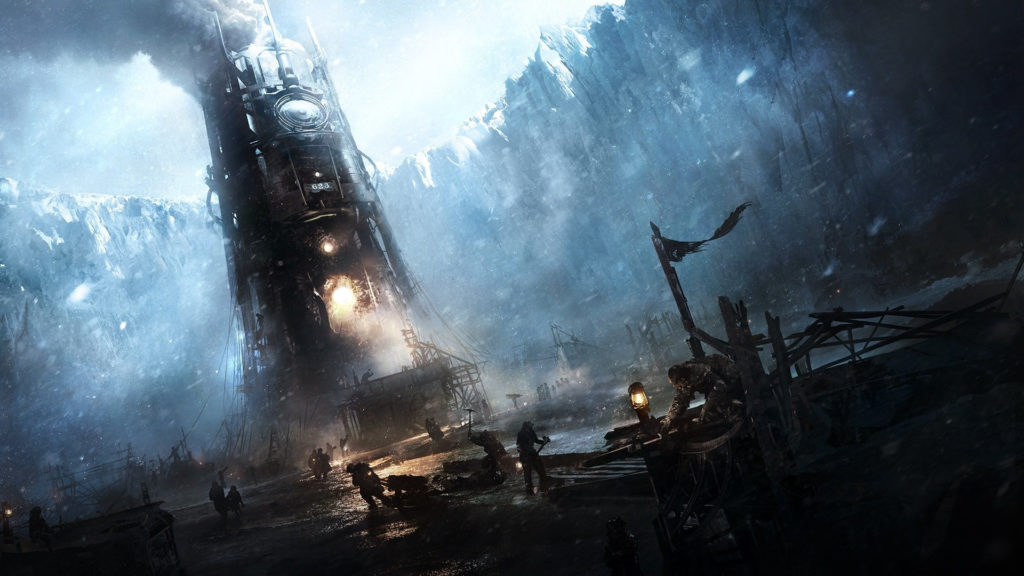
The premise of Frostpunk works wonderfully. In this alternate Victorian era future, steampunk technology has advanced just well enough for robotics and massive engines to be the dominant technology. Generators are fueled by coal or wood, and unmanned machines resemble the epitome of technological advancement. The technological aspect of this world beautifully fits the frozen setting in a perfect marriage of contrasts. Machines equal warmth, while nature equals the cold. The unification of these two concepts is what gives the game its name, Frostpunk, and it is sublime.
My love for the setting and premise aside, the story itself admittedly ends up carrying very little weight. A notable departure from 11-bit Studios’ previous hit, This War of Mine. There are constant reminders of the future seeming bleak, and how survival is a matter of preparedness and staying fit. However, founding New London really does not mean anything in the greater scheme of things. The focus actually lies within growing your population, taking care of your people, and establishing a new society. So much so, that you can either give up all of your humanity or become a religious monarchy by the end. In Frostpunk, choice is the ultimate factor in everything you do. Whether good or bad, your decisions will determine the rise or fall of New London; and every choice has a consequence.
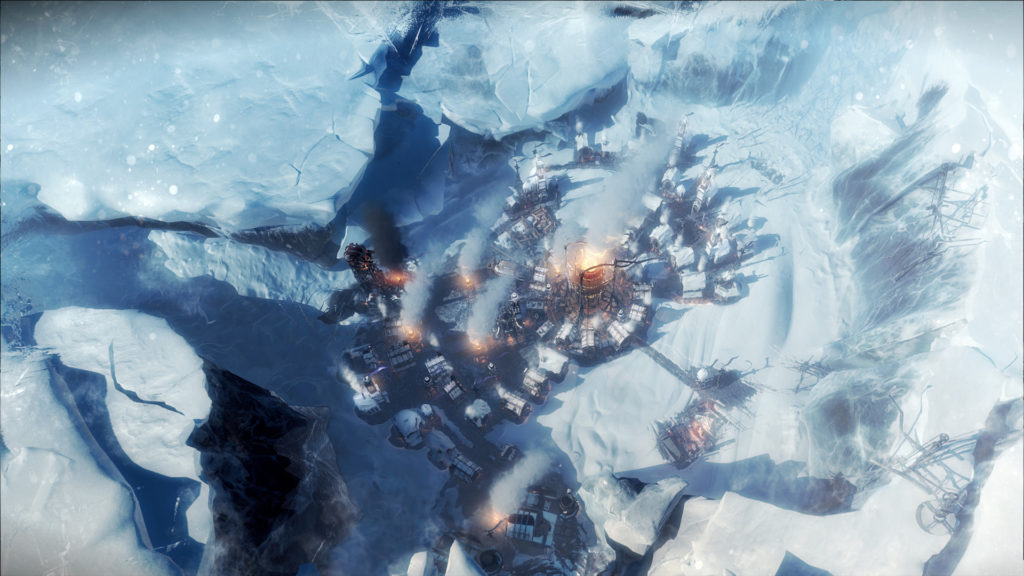
Keeping the fires lit
Building in Frostpunk is a pleasure. Whether doing so with a mouse and keyboard, or with a controller, it all feels very natural. It is rather impressive how 11-bit Studios have managed to port the natural mouse and keyboard setup available on PC, to a comfortable and easy to understand control scheme on a console gamepad. PC players might take a moment or two to reacquaint with the gamepad, but console players will feel right at home playing Frostpunk without the need for a mouse and keyboard.
Unlike most City Builders where players can usually build anywhere (or close to it at any rate), Frostpunk’s key factor is how your city requires a generator to run at all times. With this in mind, the civilisations in Frostpunk’s universe have evolved to build using circular patterns. Designed to draw as much heat from the generator as possible. In most scenarios, your city will have to be built inside a crater with the generator at its centre.
The centre of the crater and the closest point to the generator will always benefit from the generator’s full level of heat. All buildings are placed in a radial pattern extending outwards to the colder edges of the crater. At the start of the game, your generator only warms one ring (two blocks outward), and only gives off enough heat for housing. As you build outward, you will have to ensure you research and upgrade the generator in order to extend the ring of heat it produces.
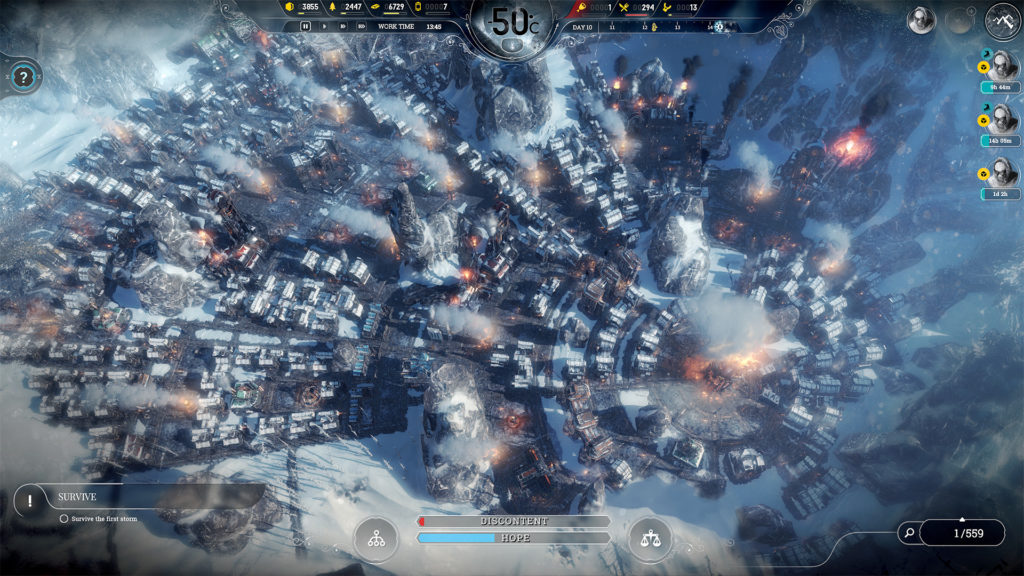
The very first order of business, however, is to build shelters for all of your settlers. One shelter will house ten settlers at first, and the campaign scenario gives you 80 to start with. To make things a bit more challenging, you also need to gather resources. Resources consist of wood, steel, and coal. They are necessary to build shelter and other buildings, keeping the generator running, and are used for research projects – once you have unlocked the means to do so.
From the start, there are piles of crates (wood), steel wreckages from previous civilisations (steel), and deposits of coal to gather from. You can select these, and then dictate how many of your settlers will collect from each location. Settlers will then automatically set out to collect as much as they can, and deliver them to your only storage bay at the start of the scenario. They will continue to do so, until 6 o’clock, after which they will all return to the generator, build the shelters you have set up, and continue to survive until morning. Just like in the real world, the citizens of Frostpunk abide to work hours within the game’s day and night cycle.
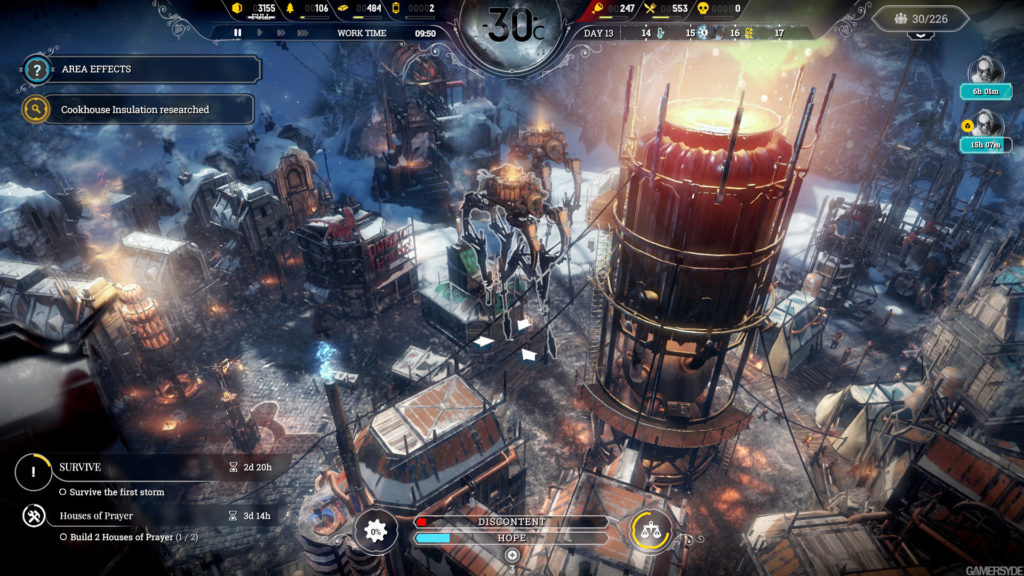
Once you have built enough shelter for all your settlers, the next task will be to build a hunters hut, a clinic, and a factory where researching will take place. Hunters huts can only be manned by workers (all settlers are workers); while a factory can only be manned by engineers. These differing classes in your society will have you micromanage your settlers a lot at first. At first it will feel somewhat distressing. This is especially the case when the first few temperature drops come into play.
As you might expect from the premise, the ever-decreasing temperature plays a huge role in Frostpunk. The initial temperature of the campaign scenario starts out at a cool -20 degrees celsius. While extremely cold to most of us, this seems to be the normal temperature for the people of New London. The generator’s first level can take care of this easily. Every third day or so, however, temperatures will fall another ten to twenty degrees! The temperature drops are initially quite steady. Making it easy to get into the habit of keeping the generator, and the buildings around it, upgraded and ready for any future temperature drops. There are also occasional rises in temperature, which will alleviate things a bit. Until the inevitable sharp decreases, which throw everything into temporary disarray.
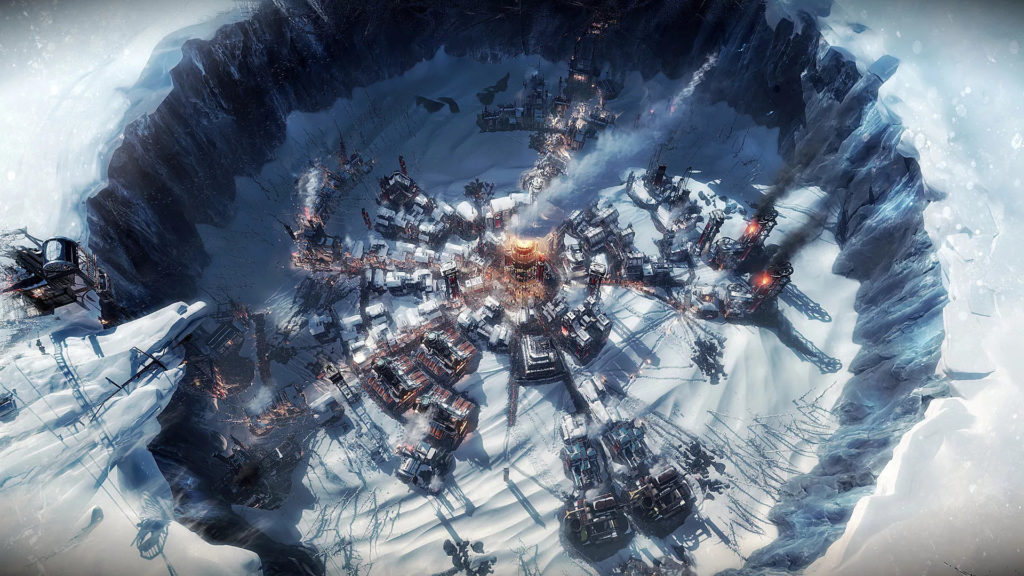
The constant battle to keep temperatures up, resource levels in a good state, and settlers in good health (AKA alive); and all above the 50% mark, plays directly into another core game mechanic: Discontent and Hope. These two bars will continually rise and fall depending on how well you execute objectives, keep settlers fed, and how bad the news from outside the crater tends to be.
During the campaign scenario, you will be beset with constant choices and messages from settlers. Everyone has their idea of what is best for the colony, but it is ultimately up to the mayor to make a decision. Usually, these objectives are accompanied by a few options. Does the colony need more clinics? You can choose to promise full medical coverage within three days, which will result in discontent falling and hope to rise. Alternatively, you can offer to have all sick settlers in working and warm clinics by the end of five days, in which case only a few settlers might regain their levels of hope. Naturally, you can also ignore the problem altogether if you think that the temporary and immediate rise of hope can wait in favour of a better solution.
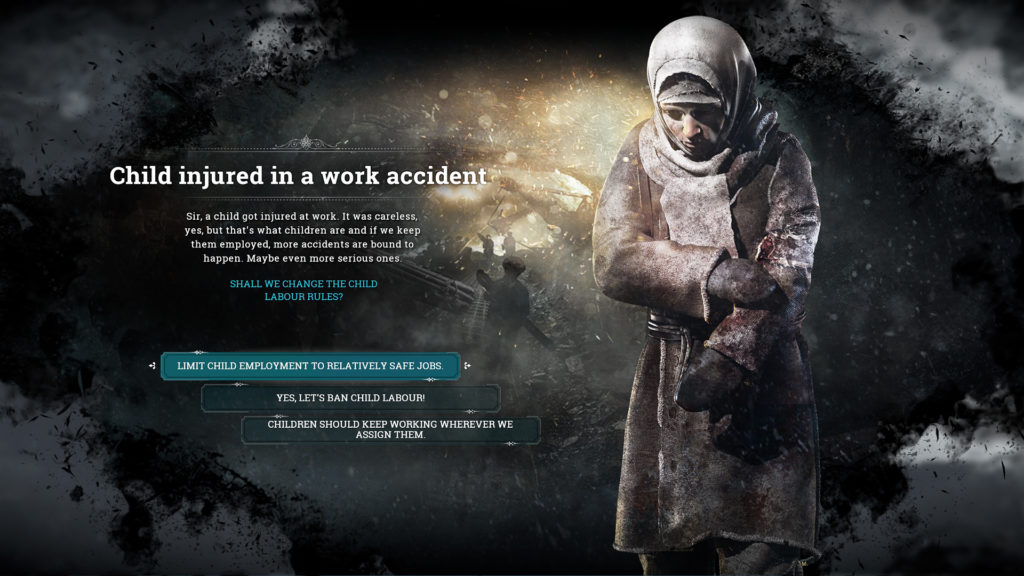
Throughout managing the state of the colony, you will also be reminded periodically of the Book of Laws. This Book of Laws is essentially a “skill tree” – a system where you can “create” new laws, thus unlocking differing tech trees as you progress. Signing certain laws will also result in increases or decreases in both discontent and hope. You win some, you lose some!
Eventually, the Book of Laws will result in a new book of sorts to be made available. The game will present you with a hard choice during this time, of whether or not you want to turn New London into a heavily policed society, or a religious one. Whichever choice you make, it will have its pros and cons. The choice is so world altering that you may very well want to replay the scenario to see how different the outcome may be.
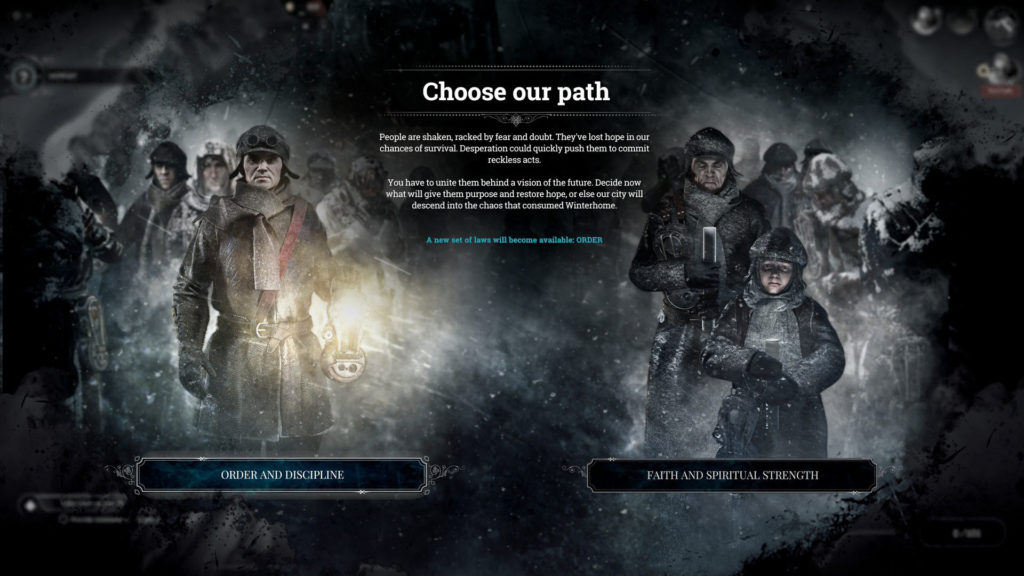
Continuing to advance on your new chosen path will gradually make things more challenging, as the settlers may not like the choice now imposed on them. Fights will break out amongst settlers, or entire rebellions will start. These must be dealt with for all discontent and hope to once again fall within manageable levels. If you fail to deal with these rebellions, you will eventually lose too many settlers to continue having a functioning society, and the game will end in failure.
At the end of the day, you want to keep your settlers as happy as possible. The challenge is learning how best to go about doing so. Frostpunk gives you a lot of choices, and many of those choices will result in good or bad outcomes. The severity of the outcomes, however, depends entirely on your morality based choices. This is a phenomenal aspect of the game, which adds a lot of replay value to the title.
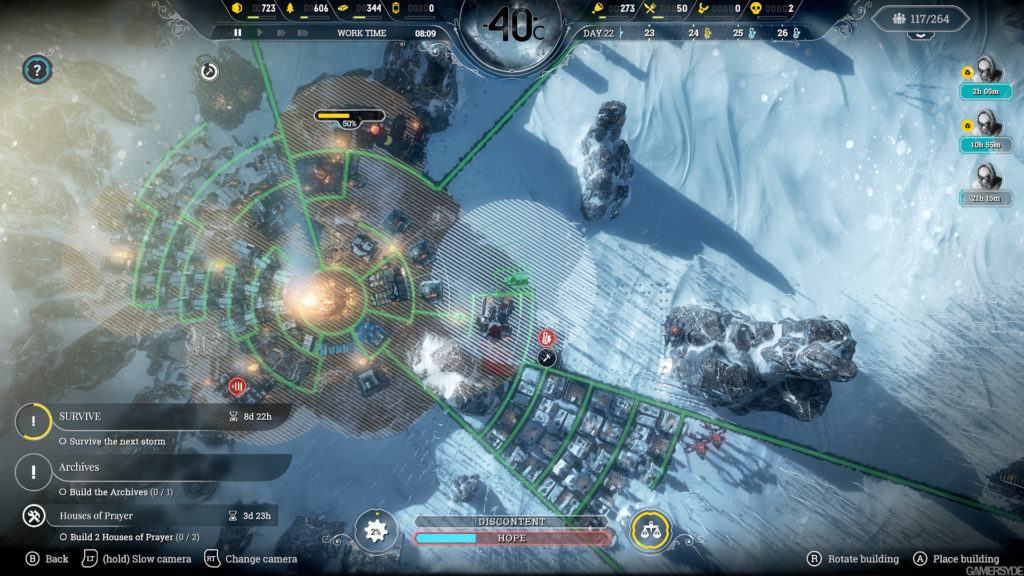
Another big part of Frostpunk comes by way of the expeditions you will have to send your scouting teams on. As you progress, you will notice how your population counts are falling much faster than they are rising. Simply put, the game takes place over months and not years. Given how long it takes to raise children, you will need to find another solution to the population decline. The answer is to send expeditions out to find clues of what is going on in the outside world, and to find both survivors and additional resources for New London.
Depending on how far you are willing to send your scouts, you will eventually find abandoned cities and cave systems. You can choose to explore these at the possible expense of some of your scouts. The reward, however, may be worth it!
Frostpunk is a gruelling survival game that doubles up as a City Builder. How you go about managing your resources is entirely up to you. Naturally, you have to take care of hunger, and warmth. The Book of Laws and the choice of systems that you put in place later, will shape New London into a society destined to be the new order of the world. I adore this aspect of Frostpunk, whereby player-choices drive the success and failures of a fledgling new civilisation
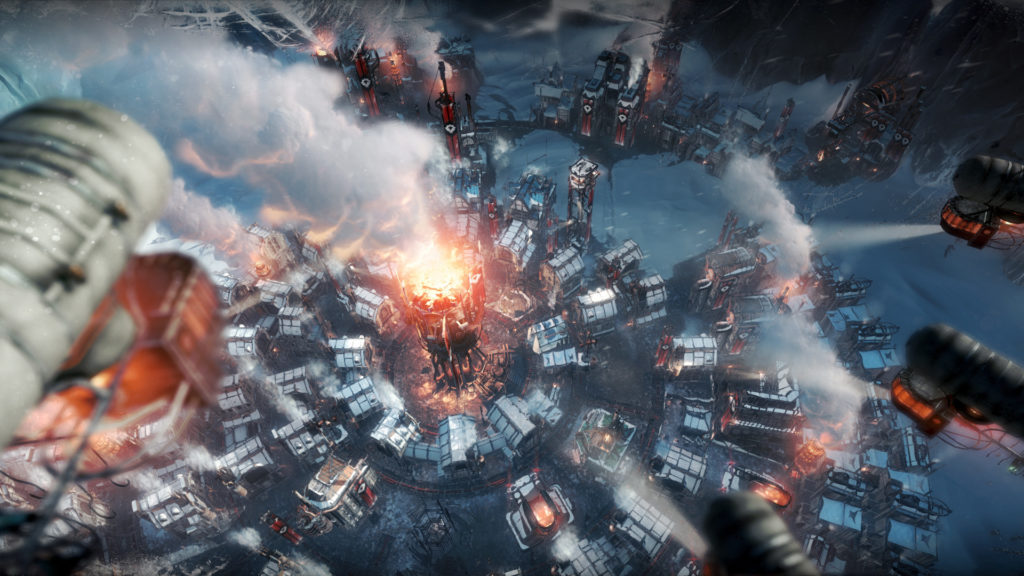
Shine bright like an icicle
Frostpunk takes place in the snow, and boy does the snow look beautiful in the game! When temperatures fall, buildings not within a warm enough ring around the generator will begin to develop snow and ice. Hunters Huts will look frozen over, while shelters will look unlivable. When the generator is warm enough, and the ring extends far enough out, the opposite is also true: shelters look warm and cosy, while hunters huts, clinics, and most other buildings, look nice and liveable. Snow will deform as citizens walk through it, carving paths to resources and back. These paths will also fill as snow increases or heat drops, giving the surroundings an icy, yet organic, feel.
Animations are always a core part of any City Builder. In order to bond with your creation, you need to feel like your cities are alive and have been lived in. 11-bit Studios have gone the extra mile in this regard, opting to make every single settler selectable. If you zoom in close enough, you can select individual settlers, see their health levels, and where they come from, who their parents are, and where they are currently stationed. This means nothing in the greater scheme of things, but it is nice to have nonetheless.
Similarly, once you unlock machines and robotics, you can watch how these huge walkers man entire buildings by themselves. You can even occasionally watch them walk over to the generator, where they regenerate their heat and energy, and go about doing the tasks you have set up for them. Watching how they walk over the entire building, how they step over settlers to not squash them, and how they sit on the generator in the centre of the colony, is always intriguing and worth a watch.
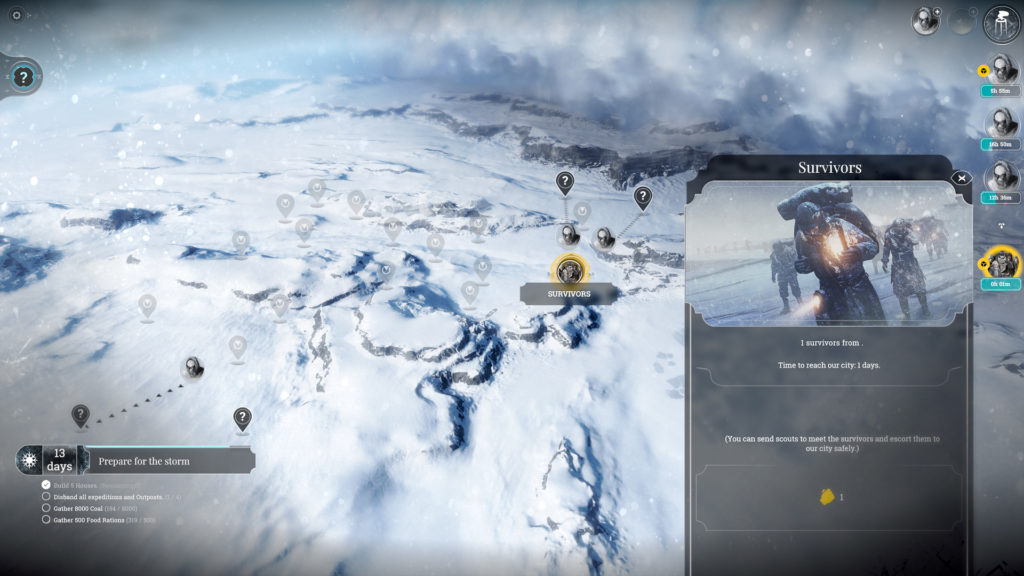
I also appreciate how much 11-bit Studios really delved into the whole steampunk aspect of Frostpunk. Given the premise of the game, the believability of its alt-history is directly tied to its visuals. As a steampunk fan, Frostpunk delivers superbly in this regard. Making it one of the best visual representations of a faux Victorian steampunk era.
The Frostpunk code we received for review is for Xbox One. As such, I must commend 11-bit on creating an exceptional port of the PC version of the game. From a visual perspective, very little has changed in comparison. It look great on the base console Xbox One that I reviewed the game on. Whilst Frostpunk might be easy to run on PC on standard settings, it can make even the beefiest of PC’s chug a little with maximum settings enabled. On console, it looks as beautiful as ever and runs at a smooth 30 frames per second.
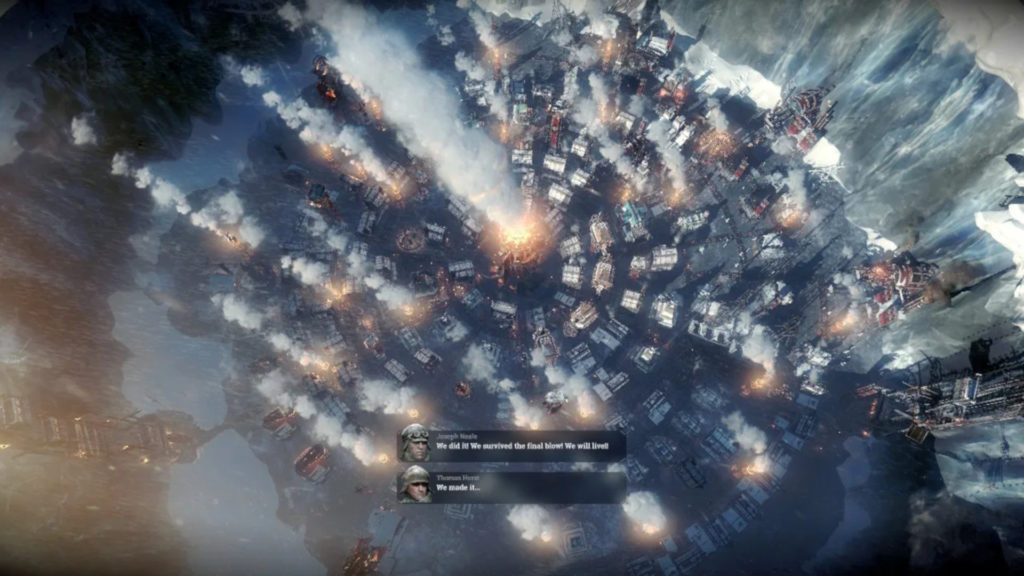
Photo Mode is one more great addition that Frostpunk gained during its big move to console. When you evoke Photo Mode via the pause menu, the game will come to a complete standstill, and open itself up to be your model!
Photo Mode itself is not as robust as you may come to expect from other titles. This is not an issue, however, since the available filters and sliders will let you take fanciful Victorian portraits within minutes. You can set the amount of weather particles, choose from one or two different frames, and even shoot in mono. It may not be the most feature-heavy photo mode, but it is a quaint addition that somehow suits the game perfectly.
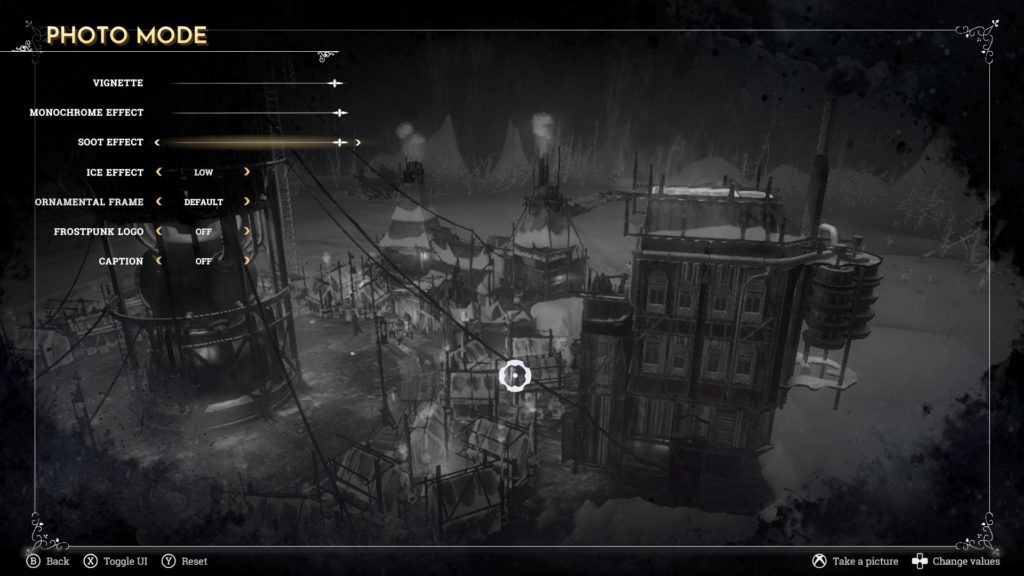
Survival at its finest
From the hand-drawn loading screens and cut scenes, through to the plentiful particle effects and animations, the game world is wonderfully realised. The visuals are complemented by the excellent implementation of ‘player choice’. An aspect driving the essential building blocks of what the future of your colony looks like, and how that plays into the random scenarios that pop up in-game. It is all quite incredible to witness.
I particularly liked how I built my colony around becoming a society of religious zealots on PC, while I adopted a a more militaristic approach on console. In addition, I also relied heavily on robots and machines on one of my console playthroughs, while I completely scrapped those in favour of advanced mines and heat hubs on another. Speaking of, the console version of the game matches the PC version visually, has the addition of a photo mode, and it has carefully thought out gamepad controls – making the game a pleasure to play on console.
Frostpunk is a unique City Builder with an interesting premise, and should be on every city builders list of ‘must play titles – regardless of platform.
| Time Played | 15+ hours |
| Difficulty | Normal |
| Platform | Xbox One |
| Acquisition | Xbox One review code courtesy of 11-bit Studios |
Junior Editor at Vamers. From Superman to Ironman; Bill Rizer to Sam Fisher and everything in-between, Edward loves it all. He is a Bachelor of Arts student and English Major specialising in Language and Literature. He is an avid writer and casual social networker with a flare for all things tech related.

